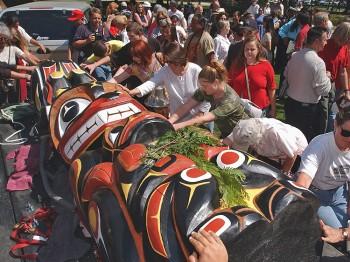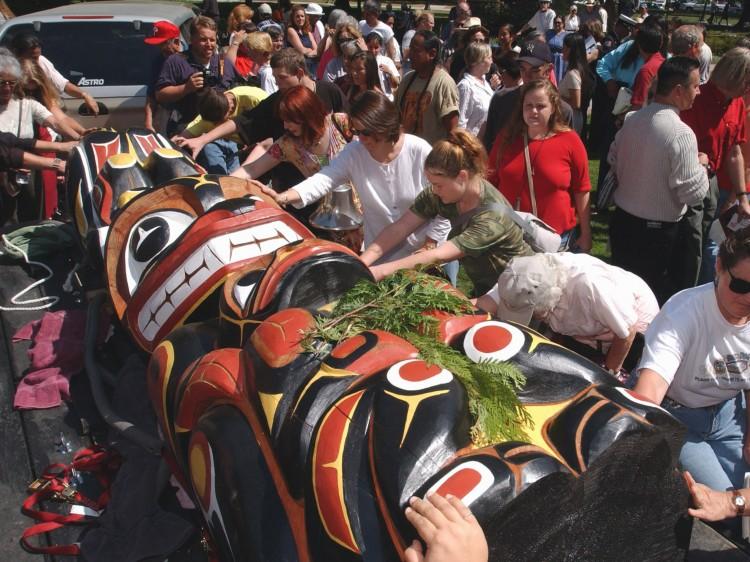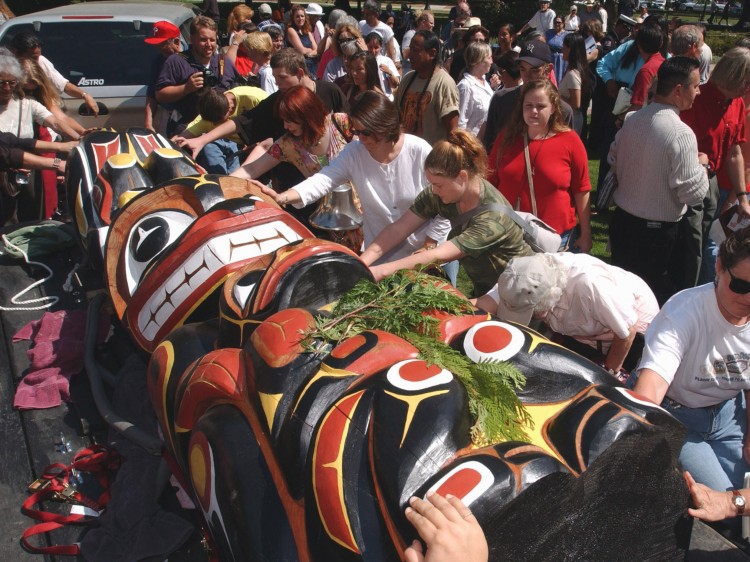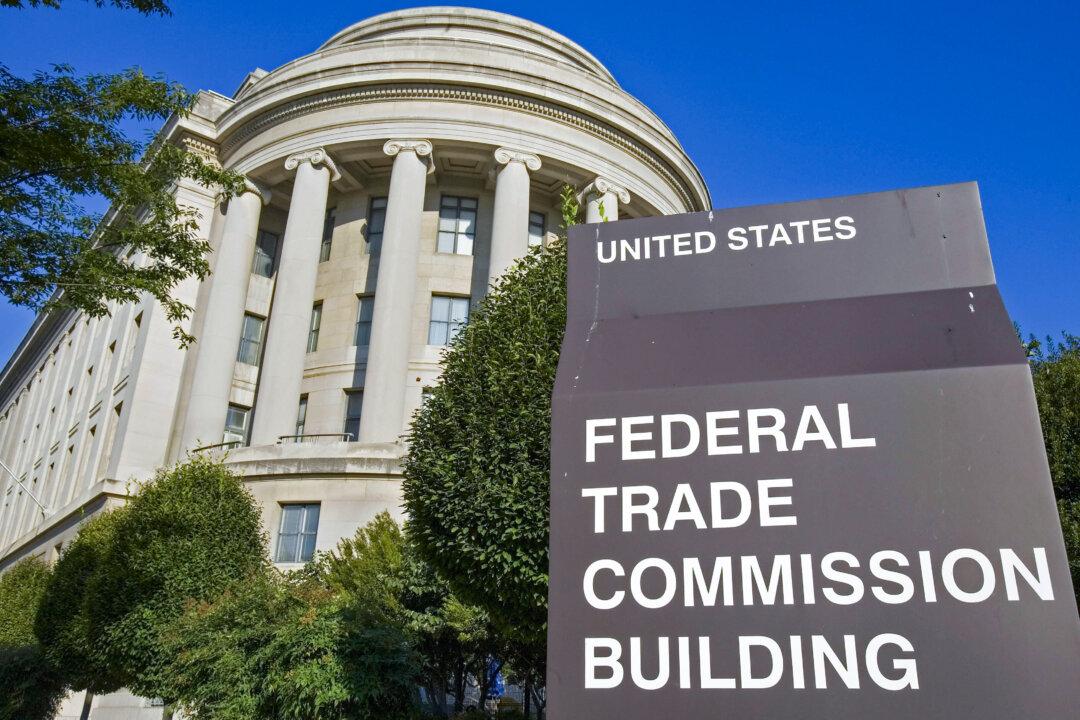EDMONTON, Canada—Doodem.
At first glance it may seem like Latin for ‘dude’—but it’s not. It’s a word from the First Nations language Anishinaabe, from eastern Canada and means blood kin group or clan. It’s also where the word totem comes from.
And if the fascinating world of Canadian Pacific Coast First Nations totem poles tickles your fancy, as it does mine, you can, as I did barely a week ago, get on a plane at your chosen aerodrome (mine was the Chopin Airport in Warsaw, Poland, my current second home), and then, a number of pressurizations, questionable meals and layovers later, you can touch down at the Vancouver International Airport in British Columbia, Canada.
Although my primary homesteading loyalties lie in Edmonton, the one-time home of Polish-rooted, ice hockey hall-of-famer Wayne “The Great One” Gretzky, I have to admit the airport in Vancouver beats Edmonton’s hands down in terms of sheer decorative appeal. It has incorporated coastal First Nations artwork in its design, including several pretty impressive totem poles surveying streams of travelers. From Vancouver, the coast is your oyster, as are the myriad museums and points of historical interest to satiate the most famished of totem pole hunters.
The totem pole, in my humble esteem, is more representative of the vast and varied land of Canada than the buck-toothed beaver that graces the Canadian 5 cent coin and at least three-quarters of all Canadian souvenirs.
A totem pole is never just one thing; it’s always a composite, hyphenated like so many Canadians. Canadian citizens with Polish roots, for example, can say, as I do, that they’re Polish-Canadians. Or, if you prefer, Canadian-Poles.
Totem poles served several functions; they are status symbols and commemoratives of things both good and bad. Some poles were erected to remember a disgrace, like an unpaid debt or a broken oath. In those cases the carved figures represented the guilty party, sometimes with ears, nose and hands dyed red to symbolize shame. But most were commemorative of heroic and historic events and were a record of a lineage of kinship.
I have often wondered what totemic representation Poles living in North America might be ascribed. Contrary to popular belief, evidenced by the commonly (mis)used phrase “low man on the totem pole”, the bottom position on the totem pole was typically the most important. Just like shelf position of products in modern marketing, what’s at eye-level gets the most attention and so was attended to with the greatest of care by the carver.
So the honorary bottom position of the Polish totem pole would most likely be occupied by Tadeusz Kosciuszko, or rather some stylized representation of him possibly incorporating elements of an animal to represent his lineage. The obvious animal of choice would be the Polish eagle.
For those who could use a little refresher, Kosciuszko was friends with Thomas Jefferson (they became pals when the Polish general came to fight on the side of the Americans during the War of Independence).
Though it’s Kosciuszko that has a monument erected in his honor in Lafayette Park, across the street from the White House, most people—especially Canadians—are likely to have sooner heard of Wayne Gretzky, who would definitely be on that pole somewhere, possibly standing directly on Kosciuszko’s shoulders.
Gretzky has numerous monuments on North American soil, too, including one outside the Rexall Arena, home of the Edmonton Oilers, the NHL hockey team that won five Stanley Cups in the ’80s, when Gretzky led them as captain.
It’s not a totem pole, but a fine honor nonetheless.
Global Dispatches: Poland—Totems and Poles
A look at the fascinating world of Canadian Pacific Coast First Nations totem poles.


By Tom Ozimek
7/10/2011
Updated: 10/1/2015






Friends Read Free